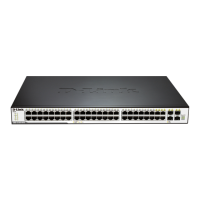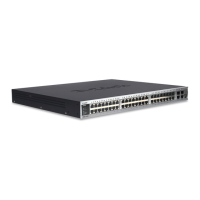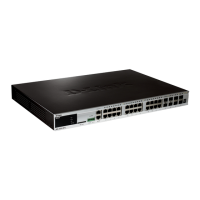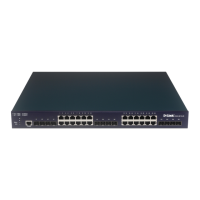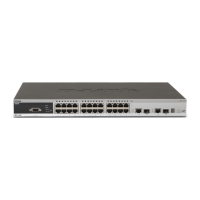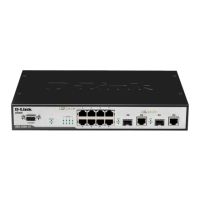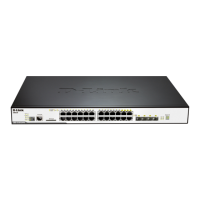xStack® DGS-3120 Series Layer 3 Managed Gigabit Ethernet Switch Web UI Reference Guide
203
Parameter Description
Originate Select the status of the originating default information here. Selecting Always specifies
that the external default route will be originated, whether a default route exists or not.
Select Default specifies that the external default route will be originated only when one
default route already exists. Selecting None specifies that the external default route will
never be originated. This is the default option.
Select the type of LSA that contains the default external route imported into OSPF.
Metric (1-65535)
Enter the metric value used by the originating default external route here. This value
must be between 1 and 65535.
Click the Apply button to accept the changes made.
OSPF LSDB Table
This window is used to display the OSPF Link State Database (LSDB).
To view the following window, click L3 Features > OSPF > OSPFv2 > OSPF LSDB Table, as shown below:
Figure 5-54 OSPF LSDB Table window
The fields that can be configured are described below:
Parameter Description
Area ID
Enter a 32-bit number in the form of an IP address (xxx.xxx.xxx.xxx) that uniquely
identifies the OSPF area in the OSPF domain.
Enter the router ID of the advertising router.
LSDB Type Specifies the LSDB type to be displayed. Options to choose from are None, RTRLink,
NETLink, Summary, ASSummary, ASExtLink, NSSA Ext and Stub.
Click the Find button to find the specified entry.
Click the View All button to view all the OSPF Link State Database entries.
Click the View Detail link to view the OSPF LSDB details of the specific entry.
After clicking the View Detail link, the following window will appear:
Figure 5-55 OSPF LSDB Table – View Detail window
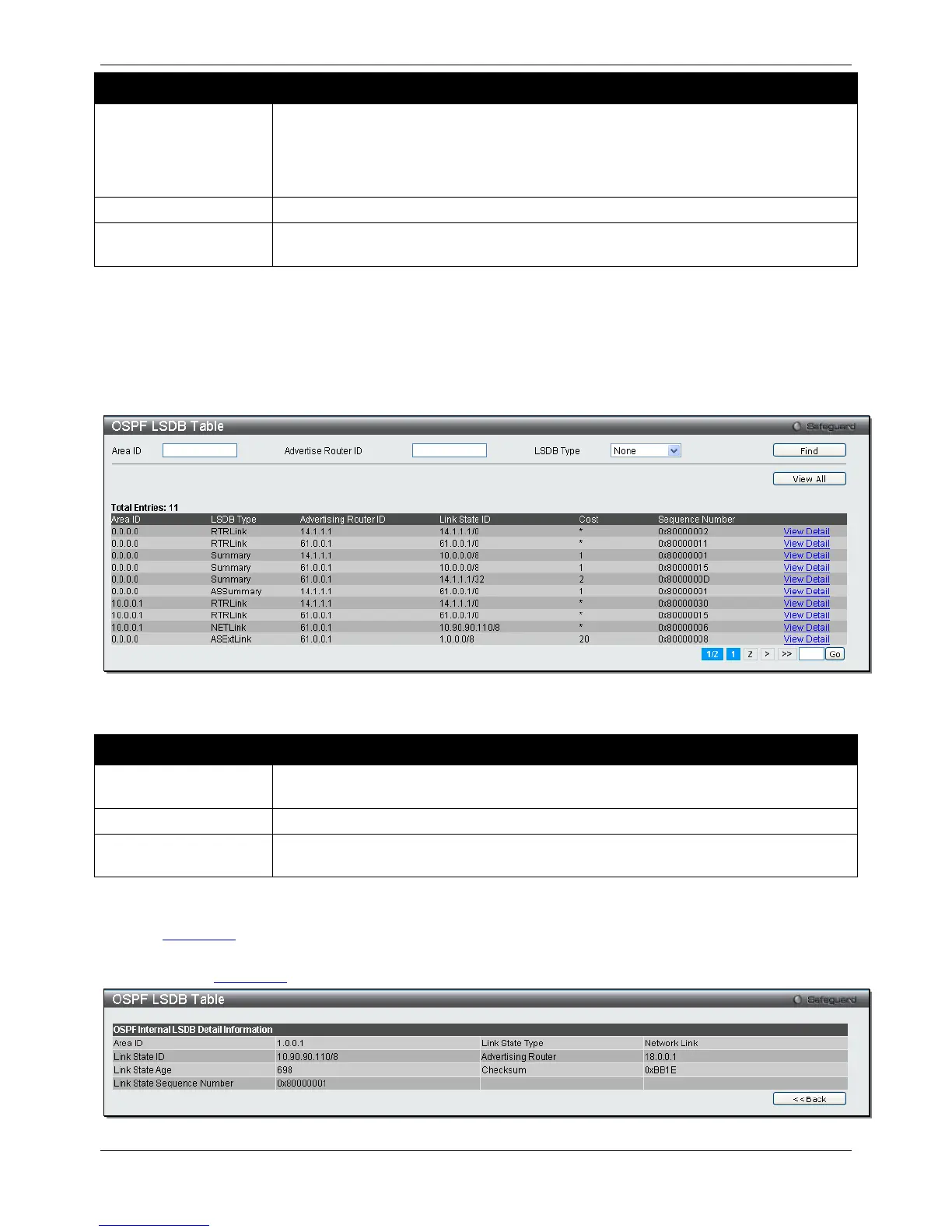